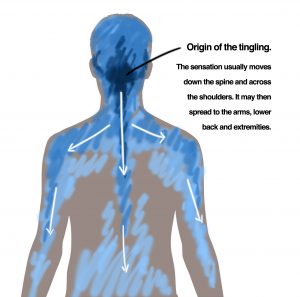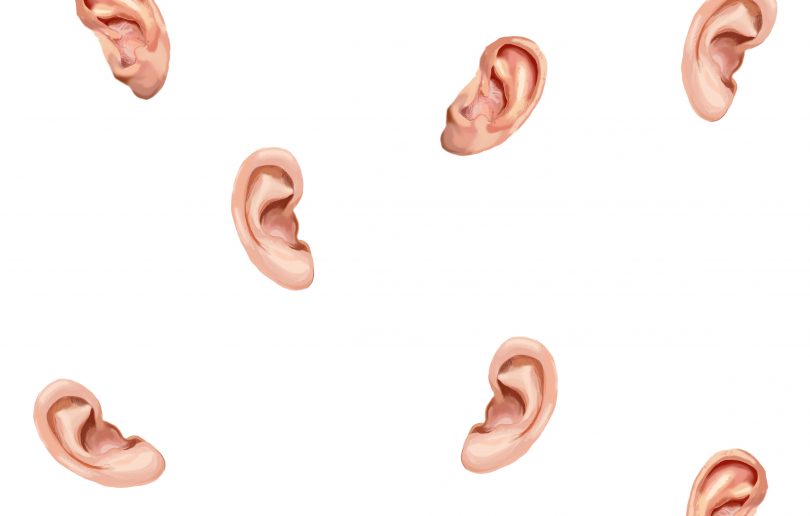Have you ever been oddly satisfied or relaxed by certain sounds and images?
It could be down to Autonomous Sensory Meridian Response or ‘ASMR’.
This modern phenomenon would have never been widely discovered without the joys of the Internet and its forums.
It’s a sensation that not everybody experiences, an unorthodox, pleasurable tingling in various parts of the body. Those who have felt it claim it to be a sort of, ‘brain orgasm’.

Usually, it will emerge in the scalp and continue down through the neck, shoulders and into the arms and legs.
ASMR occurs in response to various acoustic and visual stimuli, the most popular triggers include receiving personal attention, the sounds of whispering, tapping or scratching and the sight of people focusing deeply while completing a certain task.
Despite the fact that not many people know about it, if you punch ‘ASMR’ into Google’s search bar you’ll generate 20 million results within a second.
More recently, Swedish furniture giant IKEA have jumped onto the ASMR bandwagon.
The 25 minute advertisement embraces all things ASMR, narrated by a soft-spoken woman as she runs her hands across her fresh new IKEA bedding.
“Oddly IKEA”: IKEA ASMR
Relax with IKEA dorm solutions – or let IKEA dorm room solutions relax you in our new oddly satisfying ASMR video.From soft, comforting twin sheets designed …
Each ASMR YouTube channel has different ways of attempting to trigger their audience.
A lot of them tend to role play, for example, they’ll put on a lab coat and a stethoscope and act as a doctor giving you an exam, or, they’ll make sure their hair looks stylish, whack on some bright lipstick, grab a pair of scissors and pretend to be the owner of a salon giving you a trim.

Gibi ASMR – YouTube
At first glance, the videos give out a strong sense of intimacy, even flirtation, but that isn’t usually the objective.
However, due to the intention of provoking the sensation of euphoria through soft whisperings, stimulating sounds and fantastical role plays, many outsiders have associated ASMR with sexual arousal.
This is a common misconception; a study conducted by Swansea University showed that only 5% of ASMR consumers were reported using the media for sexual stimulation.
After digging just a little deeper, it’s clear that most content creators aren’t doing it for a sensual response.
Some will even deck themselves out as full-blown characters – from Thor to Salvador Dali, and carry out a task corresponding with that role.

Conjured Fantasy ASMR – YouTube
Paul runs the YouTube channel Ephemeral Rift and says he’s felt ASMR his entire life.
“It’s like goosebumps, but instead of that often uncomfortable shiver, it’s almost like a pleasant electric current running through your skin.”
Once Paul was introduced to ASMR, he went from a viewer to a content creator in a matter of weeks. Today, Ephemeral Rift has 360,000 subscribers and over 100 million views across all of his YouTube clips.
Ephemeral Rift 2017 Channel Trailer [ ASMR ]
Official website: https://ephemeralrift.com/Updated channel trailer where I provide a synopsis of the videos I make, why I’m here and explain a little about …
The videos are littered with comedy and theatrics, whether he’s chatting about upcoming movies, doodling on a chalkboard or portraying an elf in Santa’s workshop, it is clear that he puts a lot of effort into his works.

“I enjoy the creative process, and I hope in turn that at least one person enjoys whatever it is I do.”
For anyone who struggles to feel ASMR, Paul agreed in saying not everyone experiences it.
“I personally think it may have to do with some people being more sensitive than others, meaning their nervous systems are more sensitive as well.”
As mentioned, ASMR doesn’t happen for everyone. To some, these videos are simply bizarre and cringe-inducing.
The slow actions, the seemingly pointless tapping of inanimate objects, soft-spoken voices with wet, mouth sounds, culminating in a dramatic experience that not everyone can feel? It’s certainly perplexing.
The field of ASMR is relatively new and there has been little scientific study around the subject.
Although the term Autonomous Sensory Meridian Response may sound like it’s from an old text book, it was actually coined by an IT professional in 2010, before then, enthusiasts called it ‘The Unnamed Feeling’.
Some scientists even question whether ASMR is a tangible and measurable thing, despite the endless anecdotal accounts of the sensation.
From the few studies that have been done, the effect ASMR has had on people has been overwhelmingly positive.
Emma Barratt and Nick Davis conducted a survey in 2014 exploring to what degree ASMR could be used to ease symptoms of depression and chronic pain.
They found 69% of the participants with depression reported a mood improvement, and there was a significant difference between chronic pain before verses during a session.
Much like the effects of meditation, ASMR seems to have a positive impression on the mind and body, and while we’re yet to know all the scientific reasoning behind this curious phenomenon, the future is looking bright.
People are learning more about their bodies and brains, and triggering techniques are becoming more precise and elaborate.
Perhaps, in the near future we’ll be downloading tapping, crackling and whispering records off iTunes, or playing intensive ASMR themed games while geared up in virtual reality headsets.
But for now, ASMR remains tucked away in a crook of the Internet, explored only by those with an interest in brain orgasms.




